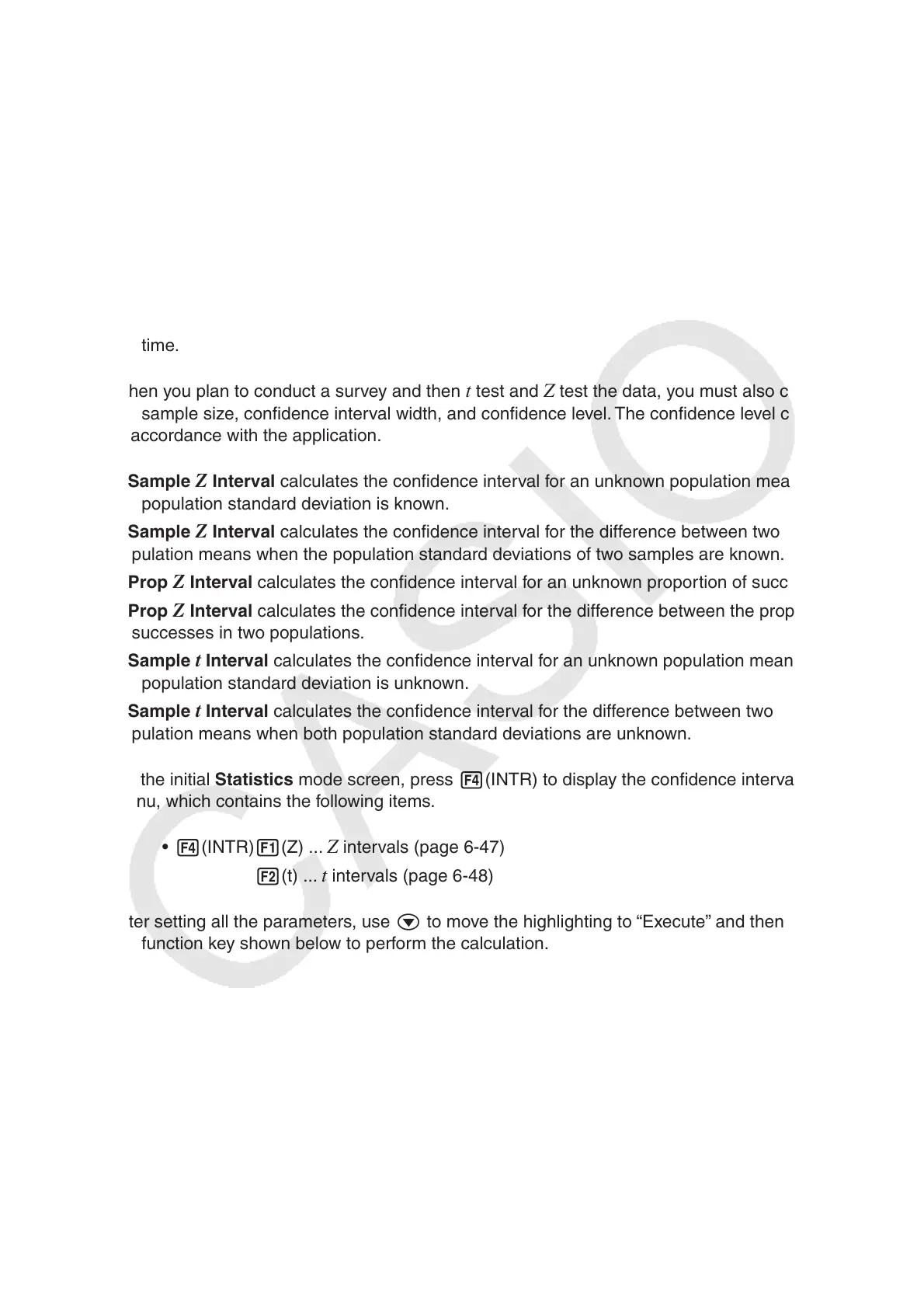6-46
6. Confidence Interval
A confidence interval is a range (interval) that includes a statistical value, usually the
population mean.
A confidence interval that is too broad makes it difficult to get an idea of where the population
value (true value) is located. A narrow confidence interval, on the other hand, limits the
population value and makes it difficult to obtain reliable results. The most commonly used
confidence levels are 95% and 99%. Raising the confidence level broadens the confidence
interval, while lowering the confidence level narrows the confidence level, but it also
increases the chance of accidently overlooking the population value. With a 95% confidence
interval, for example, the population value is not included within the resulting intervals 5% of
the time.
When you plan to conduct a survey and then t test and Z test the data, you must also consider
the sample size, confidence interval width, and confidence level. The confidence level changes
in accordance with the application.
1-Sample Z Interval calculates the confidence interval for an unknown population mean when
the population standard deviation is known.
2-Sample
Z Interval calculates the confidence interval for the difference between two
population means when the population standard deviations of two samples are known.
1-Prop
Z Interval calculates the confidence interval for an unknown proportion of successes.
2-Prop
Z Interval calculates the confidence interval for the difference between the proportion
of successes in two populations.
1-Sample
t Interval calculates the confidence interval for an unknown population mean when
the population standard deviation is unknown.
2-Sample
t Interval calculates the confidence interval for the difference between two
population means when both population standard deviations are unknown.
On the initial Statistics mode screen, press 4(INTR) to display the confidence interval
menu, which contains the following items.
• 4(INTR) 1(Z) ... Z intervals (page 6-47)
2(t) ...
t intervals (page 6-48)
After setting all the parameters, use c to move the highlighting to “Execute” and then press
the function key shown below to perform the calculation.
• 1(CALC) ... Performs the calculation.
• There is no graphing for confidence interval functions.

